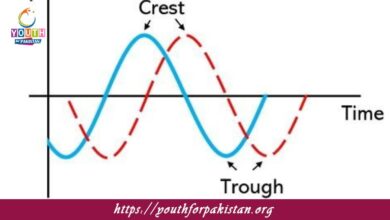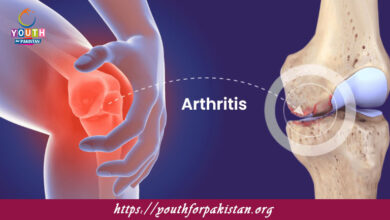Introduction To Biological Molecules MDCAT MCQs with Answers
Welcome to the Introduction To Biological Molecules MDCAT MCQs with Answers. In this post, we have shared Introduction To Biological Molecules Multiple Choice Questions and Answers for PMC MDCAT 2024. Each question in MDCAT Biology offers a chance to enhance your knowledge regarding Introduction To Biological Molecules MCQs in this MDCAT Online Test.
Which of the following is not a major type of biological molecule?
a) Carbohydrates
b) Lipids
c) Nucleic acids
d) Gases
Which type of bond connects amino acids in proteins?
a) Hydrogen bond
b) Ionic bond
c) Covalent bond
d) Peptide bond
Which biological molecule is primarily responsible for storing genetic information?
a) Proteins
b) Carbohydrates
c) Lipids
d) Nucleic acids
Which of the following is a polysaccharide?
a) Glucose
b) Fructose
c) Cellulose
d) Sucrose
What is the basic unit of proteins?
a) Nucleotide
b) Amino acid
c) Monosaccharide
d) Fatty acid
Which type of biological molecule includes enzymes?
a) Carbohydrates
b) Proteins
c) Lipids
d) Nucleic acids
What is the monomer unit of nucleic acids?
a) Amino acid
b) Nucleotide
c) Monosaccharide
d) Fatty acid
Which of the following is a function of carbohydrates?
a) Genetic information storage
b) Long-term energy storage
c) Immediate energy supply
d) Hormone production
Which biological molecule is insoluble in water?
a) Carbohydrates
b) Nucleic acids
c) Proteins
d) Lipids
Which molecule serves as the main energy source for cells?
a) Proteins
b) Carbohydrates
c) Lipids
d) Nucleic acids
What is the primary role of nucleic acids in the cell?
a) Energy storage
b) Structural support
c) Genetic information transmission
d) Catalysis
Which type of lipid is used for long-term energy storage?
a) Phospholipids
b) Steroids
c) Triglycerides
d) Waxes
Which of the following is an example of a disaccharide?
a) Glucose
b) Sucrose
c) Starch
d) Glycogen
Which molecule is known as a “building block” of proteins?
a) Nucleotide
b) Monosaccharide
c) Amino acid
d) Fatty acid
What is the role of enzymes in biological processes?
a) Provide structural support
b) Act as catalysts
c) Store genetic information
d) Store energy
Which biological molecule contains nitrogen as a key element?
a) Carbohydrates
b) Lipids
c) Proteins
d) Polysaccharides
What type of bond links nucleotides in a nucleic acid chain?
a) Hydrogen bond
b) Ionic bond
c) Peptide bond
d) Phosphodiester bond
Which of the following is a major component of cell membranes?
a) Carbohydrates
b) Nucleic acids
c) Lipids
d) Proteins
What is the primary function of carbohydrates in plants?
a) Storage of genetic material
b) Providing energy for cellular activities
c) Structural support
d) Hormone regulation
Which biological molecule is commonly referred to as “sugars”?
a) Lipids
b) Nucleic acids
c) Proteins
d) Carbohydrates
What is the main structural component of plant cell walls?
a) Glycogen
b) Cellulose
c) Starch
d) Chitin
Which type of biological molecule functions as an energy carrier in cells?
a) ATP
b) DNA
c) Enzyme
d) Cellulose
Which of the following is a characteristic of a saturated fatty acid?
a) Contains one or more double bonds
b) Contains no double bonds
c) Liquid at room temperature
d) Found primarily in plant oils
Which biological molecule is known for its role in heredity and genetic information?
a) Lipids
b) Carbohydrates
c) Proteins
d) Nucleic acids
Which process involves the synthesis of complex molecules from simpler ones?
a) Hydrolysis
b) Condensation
c) Oxidation
d) Reduction
Which of the following is not a function of lipids?
a) Energy storage
b) Insulation
c) Catalysis
d) Cell membrane structure
What is the main difference between RNA and DNA?
a) RNA contains thymine, DNA does not
b) DNA contains ribose, RNA does not
c) RNA is double-stranded, DNA is single-stranded
d) DNA contains thymine, RNA contains uracil
Which biomolecule is responsible for transferring genetic information during protein synthesis?
a) DNA
b) RNA
c) ATP
d) Lipids
What type of biological molecule is glycogen?
a) Protein
b) Carbohydrate
c) Lipid
d) Nucleic acid
Which biological molecule is primarily used for quick energy release in cells?
a) Proteins
b) Carbohydrates
c) Lipids
d) Nucleic acids
What is the primary building block of nucleic acids?
a) Amino acid
b) Monosaccharide
c) Nucleotide
d) Fatty acid
Which biological molecule is composed of long chains of nucleotides?
a) Proteins
b) Carbohydrates
c) Nucleic acids
d) Lipids
Which of the following is a characteristic of unsaturated fatty acids?
a) Solid at room temperature
b) Contains double bonds
c) Found primarily in animal fats
d) Contains only single bonds
Which type of bond forms between the hydroxyl groups of carbohydrates?
a) Hydrogen bond
b) Ionic bond
c) Glycosidic bond
d) Peptide bond
What is the term for a molecule that has both hydrophilic and hydrophobic regions?
a) Amphipathic
b) Hydrophobic
c) Hydrophilic
d) Polar
Which biological molecule plays a key role in muscle contraction?
a) Nucleic acids
b) Lipids
c) Proteins
d) Carbohydrates
What is the primary component of the plasma membrane of cells?
a) Proteins
b) Carbohydrates
c) Lipids
d) Nucleic acids
Which of the following molecules is essential for energy transfer in cells?
a) DNA
b) ATP
c) RNA
d) Cellulose
What type of biological molecule is cellulose?
a) Protein
b) Carbohydrate
c) Lipid
d) Nucleic acid
Which process involves the breakdown of complex molecules into simpler ones?
a) Condensation
b) Hydrolysis
c) Synthesis
d) Dehydration
Which of the following is not a characteristic of nucleic acids?
a) Contains a phosphate group
b) Contains amino acids
c) Contains a sugar molecule
d) Contains nitrogenous bases
Which biological molecule serves as the blueprint for building proteins?
a) RNA
b) DNA
c) ATP
d) Lipids
Which molecule provides the energy required for most cellular processes?
a) Lipids
b) ATP
c) Carbohydrates
d) Proteins
Which of the following is a characteristic of all amino acids?
a) Contains a carboxyl group
b) Contains a hydroxyl group
c) Contains a phosphate group
d) Contains a methyl group
What type of reaction links monosaccharides to form disaccharides and polysaccharides?
a) Hydrolysis
b) Dehydration synthesis
c) Oxidation
d) Reduction
Which biological molecule is crucial for the structure of cell membranes and energy storage?
a) Nucleic acids
b) Carbohydrates
c) Lipids
d) Proteins
What is the main difference between DNA and RNA?
a) DNA is double-stranded, RNA is single-stranded
b) RNA is double-stranded, DNA is single-stranded
c) DNA contains uracil, RNA contains thymine
d) RNA contains thymine, DNA contains uracil
Which type of lipid is primarily found in cell membranes?
a) Triglycerides
b) Phospholipids
c) Steroids
d) Waxes
What is the primary function of DNA?
a) Energy storage
b) Protein synthesis
c) Genetic information storage
d) Cell membrane structure
Which of the following biomolecules can be used as a source of long-term energy?
a) Proteins
b) Carbohydrates
c) Lipids
d) Nucleic acids
If you are interested to enhance your knowledge regarding Physics, Chemistry, Computer, and Biology please click on the link of each category, you will be redirected to dedicated website for each category.





